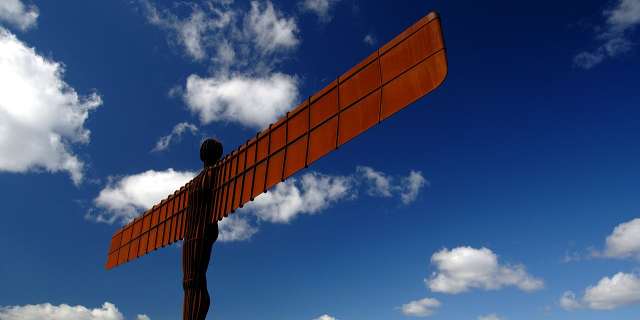Knaresborough ( NAIRZ-bər-ə) is a market and spa town and civil parish on the River Nidd in North Yorkshire, England. It is three miles (five kilometres) east of Harrogate and was in the Borough of Harrogate until April 2023.
The Knaresborough Hoard, the largest hoard of Romano-British copper-alloy vessels discovered to date in Britain, dates to the 4th century and indicates wealthy Roman presence in the area.[1] It was probably discovered near Farnham near where two important Roman roads ran: Cade’s Road on the eastern side and Dere Street to the west, a major route to York and Hadrian’s Wall. There were a number of wealthy Roman villas in the area and the hoard may have come from one of these.
Knaresborough is mentioned in the Domesday Book of 1086 as Chenaresburg, meaning "Cenheard's fortress",[2][3] in the wapentake of Burghshire,[4] renamed Claro Wapentake in the 12th century. Knaresborough Castle is Norman;[5] around 1100, the town began to grow. It provided a market and attracted traders to service the castle. The parish church, St John's, was established around this time. The earliest identified Lord of Knaresborough is around 1115 when Serlo de Burgh held the Honour of Knaresborough from the King.[6]
Hugh de Morville was granted the Honour of Knaresborough in 1158. He was constable of Knaresborough and leader of the group of four knights who murdered Archbishop Thomas Becket at Canterbury Cathedral on 29 December 1170. The four knights fled to Knaresborough and hid at the castle. Hugh de Morville forfeited the lands in 1173, not for his implication in the murder of Thomas Becket, but for "complicity in the rebellion of Henry the Young King", according to the Early Yorkshire Charters.
 Knaresborough Market Place
Knaresborough Market PlaceThe Honour of Knaresborough then passed to the Stuteville family. When the Stuteville line was broken with the death of Robert the 4th (son of Robert 3rd) in 1205, King John effectively took the Honour of Knaresborough for himself.[7] The first Maundy Money was distributed in Knaresborough by King John on 15 April 1210.[8][9] Knaresborough Forest, which extended far to the south of the town, is reputed to have been one of King John's favourite hunting grounds.
Although a market was first mentioned in 1206, the town was not granted a Royal Charter to hold a market until 1310, by Edward II. A market is still held every Wednesday in the market square. In Edward II's reign, the castle was occupied by rebels and the curtain walls were breached by a siege engine. Later, Scots invaders burned much of the town and the parish church. In 1328, as part of the marriage settlement, Queen Philippa was granted "the Castle, Town, Forest and Honour of Knaresborough" by Edward III and the parish church was restored. After her death in 1369, the Honour was granted by Edward to their younger son, John of Gaunt, the Duke of Lancaster and since then the castle has belonged to the Duchy of Lancaster. After the accession of Henry IV the castle lost much of its importance in national affairs, but remained a key site in regional administration for another century.
In the English Civil War, following the Battle of Marston Moor in 1644, the castle was besieged by Parliamentary forces. The castle eventually fell and in 1646 an order was made by Parliament for its destruction (but not carried out till 1648). The destruction was mainly done by citizens looting the stone. Many town centre buildings are built of castle stone.
 Knaresborough (period 1850-98) by Francis Frith
Knaresborough (period 1850-98) by Francis FrithThe railway age began in Knaresborough in 1848 with the opening of a railway station on Hay Park Lane; this was replaced with the current one three years later in 1851. The town had a railway line to Boroughbridge until it closed to passengers in 1950; it was dismantled in 1964.
Historically in the West Riding of Yorkshire, Knaresborough became part of North Yorkshire in 1974.


































Add new comment